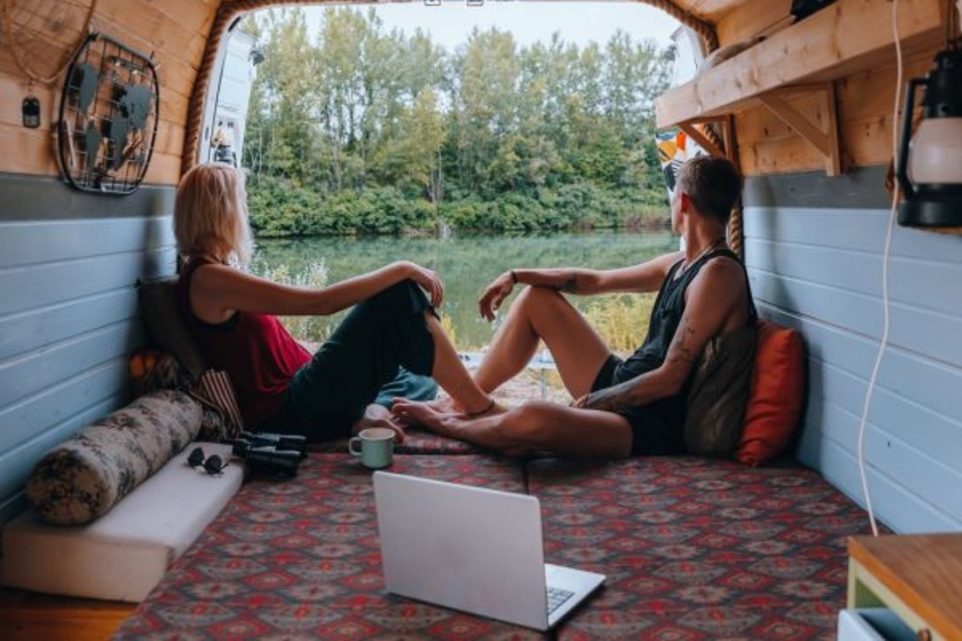DIY Truck Camper: How to Build a Lightweight Camper for Your Next Adventure

As the open road calls and the allure of adventure beckons, there’s a unique sense of freedom that comes with having your own camper. While traditional RVs can be appealing, the idea of a customized, lightweight truck camper offers not only a cost-effective solution but also a canvas for your creativity.
In this guide, we’ll embark on a journey of DIY ingenuity, exploring how to craft a compact yet comfortable home on wheels for your next road trip escapade. Get ready to turn your pickup truck into the ultimate adventure companion with this step-by-step guide.
Materials and Tools
Materials
- Wood: Plywood, lumber, and other framing materials
- Insulation materials: Foam, fiberglass, or spray foam insulation
- Screws, nails, and other fasteners: Choose appropriate sizes and types for your project
- Electrical components: Wiring, switches, lights, and batteries
- Plumbing components (if applicable): Pipes, fittings, water pump, and tanks
Tools
- Power tools: Drill, circular saw, jigsaw, and a router
- Manual tools: Hammer, screwdriver, chisel, and a hand saw
- Measuring tape and level: Accurate measurements are crucial for a successful build
- Safety equipment: Safety goggles, gloves, ear protection, a dust mask, and rechargeable flashlight
Design and Planning
Choosing the right truck for the camper conversion
- Take the truck’s size, weight capacity, and compatibility into account. Ensure your truck can handle the weight of the camper.
- Assess the truck’s current condition and necessary modifications. Check for any structural issues or mechanical problems that you may need to address.
Designing the layout and floor plan of the camper
- Analyze space requirements for sleeping, storage, and living areas. Determine the dimensions and layout based on your needs.
- Sketch a detailed floor plan and consider ergonomics. Plan the placement of furniture, appliances, and storage to maximize space and functionality.
- Calculate weight distribution and center of gravity to ensure safe handling. Distribute the weight evenly to maintain stability while driving.
Building the Camper Shell
Framing the structure of the camper
- Create a solid base and framework using wood or metal. Choose the appropriate materials based on your desired strength and weight.
- Install reinforcement for additional stability and durability. Add bracing and cross supports as needed.
Adding insulation and weatherproofing
- Choose appropriate insulation materials for temperature control. Consider the climate you’ll be camping in.
- Apply insulation to walls, ceiling, and floor. Ensure proper installation to prevent heat loss or gain.
- Seal gaps and joints to prevent drafts and water leaks. Use weatherstripping and sealant to keep your camper watertight.
Interior Construction
Building the sleeping area
- Construct a sturdy bed frame and choose a mattress. Select a comfortable and supportive mattress that fits your available space.
- Design storage compartments and cabinets under the bed. Utilize the space efficiently for storing camping gear and necessities.
Creating a functional kitchenette
- Install a countertop, sink, and cooking appliances. Consider space-saving options like compact stoves and sinks.
- Incorporate storage solutions for utensils, cookware, and food. Use shelves, drawers, and hanging racks to maximize storage space.
Designing a comfortable living space
- Build seating areas with cushions and storage compartments. Create a cozy lounge area with built-in storage for additional functionality.
- Add a table or foldable workspace that is easy to remove or keep out of the way when not in use.
Electrical and Plumbing Systems
Installing a power system
- Choose between solar panels, batteries, or a generator. Consider your power needs and the availability of resources.
- Install wiring lights, outlets, and other electrical components while following proper wiring and electrical safety measures.
Adding a water system (if applicable)
- Install a freshwater tank, pump, and plumbing fixtures. Choose the appropriate size and capacity for your needs.
- Design a greywater disposal system to safely dispose of wastewater while camping.
Finishing Touches
- Paint or stain the interior and exterior surfaces. Use a durable paint or stain to protect the wood from the elements.
- Install windows, curtains, and blinds for privacy and natural light. Windows can provide ventilation and natural lighting, while curtains or blinds provide privacy.
- Add decorative elements and personal touches. Make your camper feel like home with decorations and unique pieces that reflect your style and preferences.
Conclusion
Building a DIY truck camper can be a rewarding project that allows you to customize your camping experience. By carefully planning and using the right materials and tools, you can create a lightweight camper that meets your needs and fits your budget. Remember to prioritize safety and regular maintenance to ensure years of enjoyment on your next adventure. Get ready to hit the road and embark on unforgettable adventures, knowing that your lightweight, customized camper is ready to take you wherever your heart desires.
Your Adventure, Our Experience
At TheCampingList, our dedication to authenticity and reliability stems from our own adventures in the great outdoors. Our team, comprised of seasoned experts in hiking, camping, climbing, cycling, fishing, and hunting, rigorously tests every product and shares insights drawn from real experiences. This hands-on approach ensures our reviews and guides meet the highest standards of durability, functionality, and comfort. Moreover, our platform thrives on the rich contributions and feedback from our vibrant community of enthusiasts. We pride ourselves on delivering unbiased, educational content that empowers and informs your outdoor pursuits. Trust in TheCampingList for genuine advice and support, where we're all about enriching your journey, every step of the way.